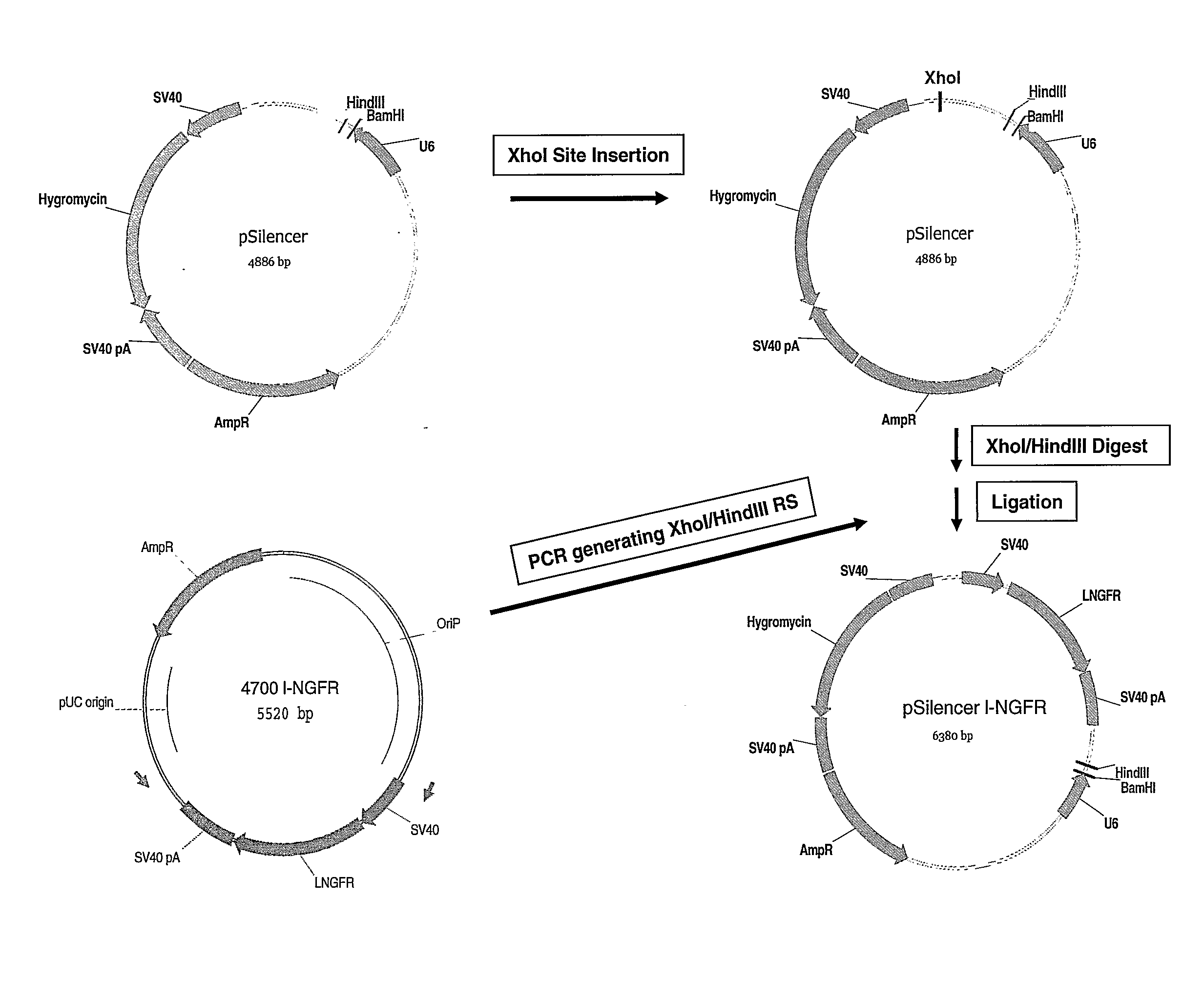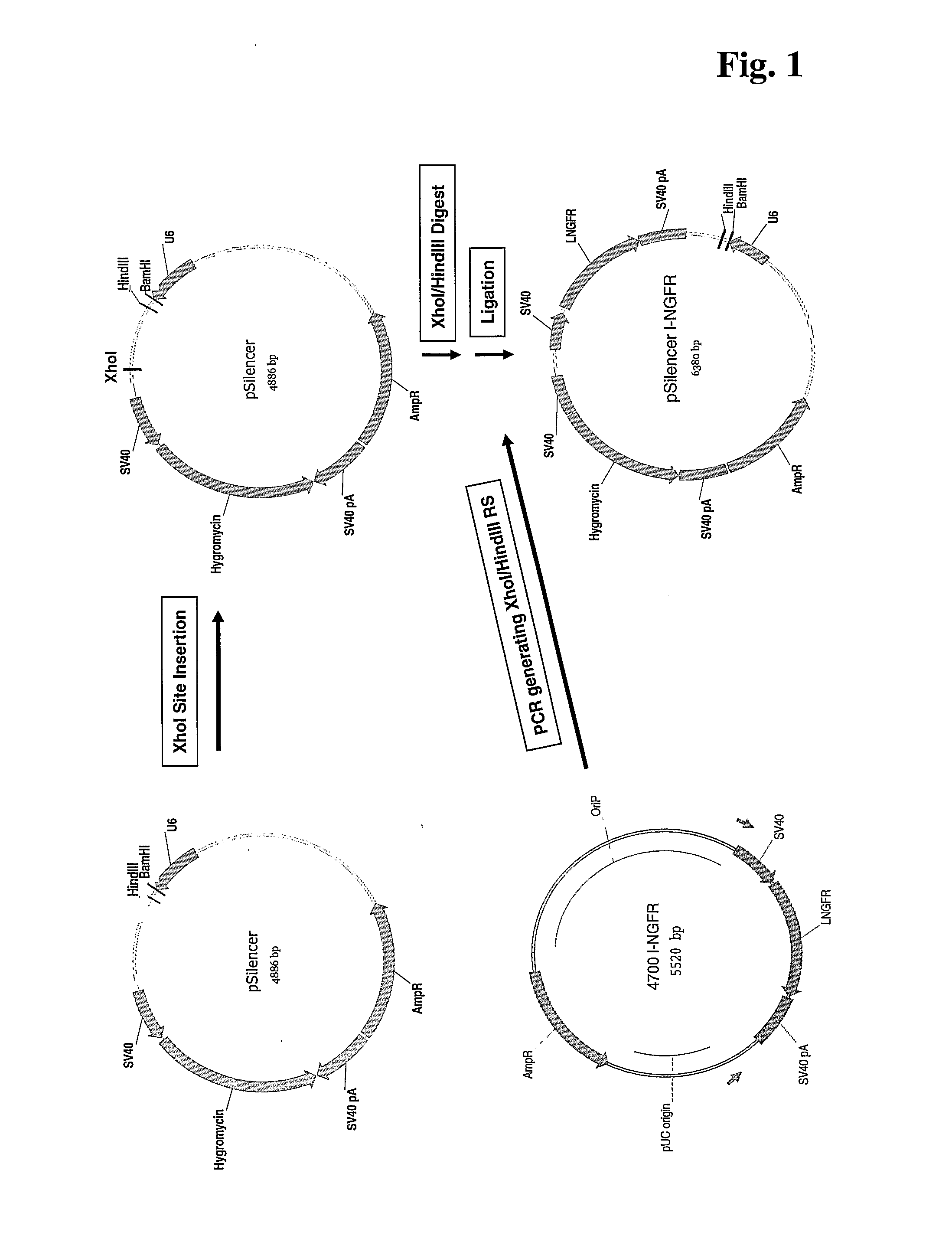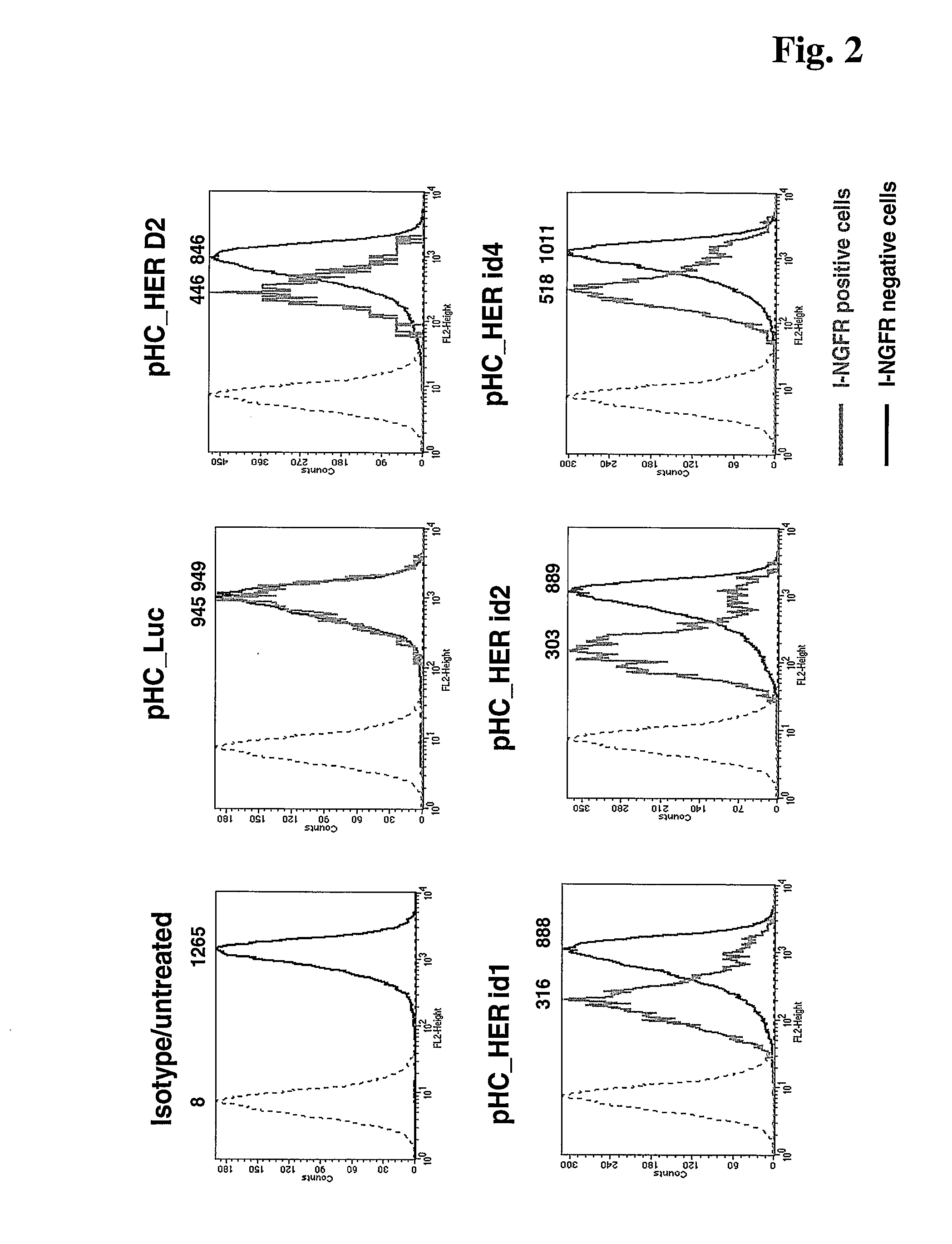Method for Improved Selection of Rnai Transfectants
a technology of rnai transfectants and rnai transfectants, which is applied in the field of improved selection of rnai transfectants, can solve problems such as use of markers
- Summary
- Abstract
- Description
- Claims
- Application Information
AI Technical Summary
Benefits of technology
Problems solved by technology
Method used
Image
Examples
example 1
[0080]Cloning Strategy for the Generation of a Vector Encoding Both 1-NGFR and a U6 Promoter Driven shRNA Expression Cassette
[0081]To generate a 1-NGFR vector coexpressing the U6 promoter driven shRNA cassette termed pHC for high-content, the 1-NGFR ORF in context with a SV40 early promoter and polyadenylation sequence was amplified from a 1-NGFR expression vector by PCR using the primers
(SEQ ID NO: 1)pHC_FW 5′-CGCCTCGAGTCCCTGTGGAATGTGTGTCAGTTAG-3′and(SEQ ID NO: 2)pHC_RV 5′-CGCAAGCTTGCTGGCCTTTTGCTCACATGTTC-3′
[0082]The 1-NGFR PCR-fragment was subcloned into pSilencer U6 2.1 Hygro (Ambion) using the HindIII and a unique restriction site for XhoI generated by site-directed mutagenesis (Stratagene). Subsequently, a variety of DNA oligonucleotides (chemically synthesized by Metabion (Germany)) encoding shRNA sequences were annealed and ligated into pHC to generate pHC_luc, pHC_eg5 and pHC_Her2:
luc:(SEQ ID NO: 3)5′-GATCCGCTTACGCTGACTTCGATTCAAGAGATCGAAGTACTCAGCGTAAGTTTTTTGGAA-3′(SEQ ID NO:...
example 2
[0084]Knock-Down Efficiency of HER2 Protein that is Expressed on the Cell Surface
[0085]SKBR3 cells were transfected with 4 different pHC_Her2 constructs encoding shRNAs directed against HER2. Transfection with pHC luc targeting luciferase, which is not expressed in these cells, served as negative control. HER2 expression in pHC_luc and pHC_Her Fugene 6 (Roche Diagnostics) transfected cells was determined by staining the cells for HER2 as well as for 1-NGFR followed by flow cytometric analysis. Gating on 1-NGFR positive cells enables exclusive analysis of the transfected cell population. Results are shown in FIG. 2. In the histogram plots black histograms represent HER2 expression of non-transfected (1-NGFR negative) cells and grey histograms represent HER2 expression transfected (1-NGFR positive) cells recorded from the same sample. The dashed graphs in the histogram plot represent isotype control staining. Numbers on the x-axis and above the histograms indicate mean fluorescence in...
example 3
Enrichment of 1-NGFR-Positive Cells by Magnetic Cell Separation (MACS) in Transient Transfection Experiments
[0087]The MACSelect 1-NGFR System (Miltenyi Biotech) was used to enrich 1-NGFR positive cells 96 hrs after transfection according to example 2 of pHC_luc. In the histograms (FIG. 3), 1-NGFR expression of non-transfected cell populations (black curves) was compared to 1-NGFR expression before MACS sorting (upper panel, grey curves) and after MACS sorting (lower panel, grey curves) of pHC_luc transfected cell populations, respectively. Here, 1-NGFR expression was determined by flow cytometric detection of -Microbead labeled cells applying -Alexa488 Ab (Molecular Probes). The number in the histograms indicates the percentage of Microbead labeled cells before and after magnetic cell separation.
[0088]Thus, application of 1-NGFR as reporter offers the unique option to enrich silenced cells via magnetic cell sorting.
PUM
| Property | Measurement | Unit |
|---|---|---|
| cell surface protein | aaaaa | aaaaa |
| surface | aaaaa | aaaaa |
| antibiotic resistance | aaaaa | aaaaa |
Abstract
Description
Claims
Application Information
 Login to View More
Login to View More - R&D
- Intellectual Property
- Life Sciences
- Materials
- Tech Scout
- Unparalleled Data Quality
- Higher Quality Content
- 60% Fewer Hallucinations
Browse by: Latest US Patents, China's latest patents, Technical Efficacy Thesaurus, Application Domain, Technology Topic, Popular Technical Reports.
© 2025 PatSnap. All rights reserved.Legal|Privacy policy|Modern Slavery Act Transparency Statement|Sitemap|About US| Contact US: help@patsnap.com



